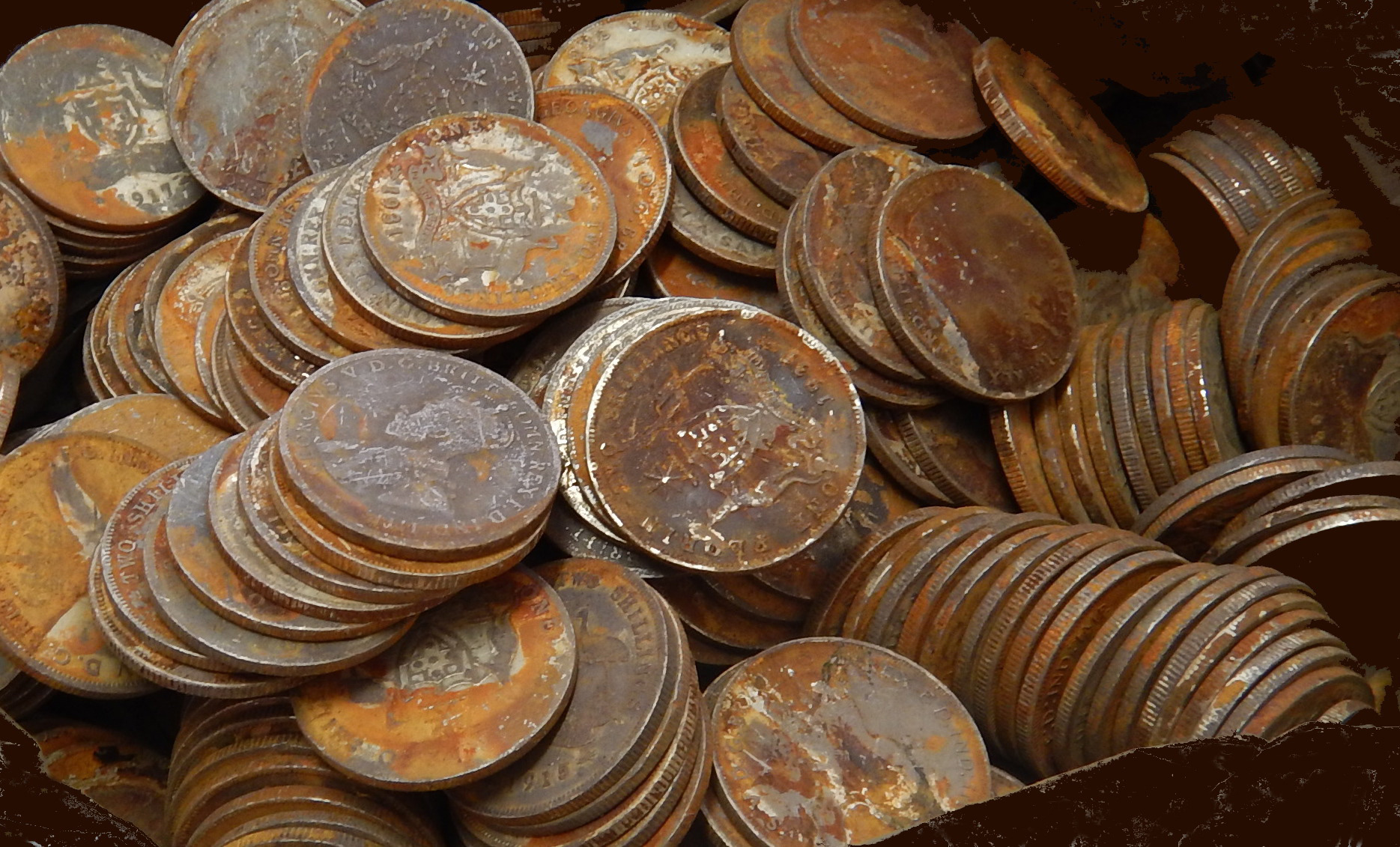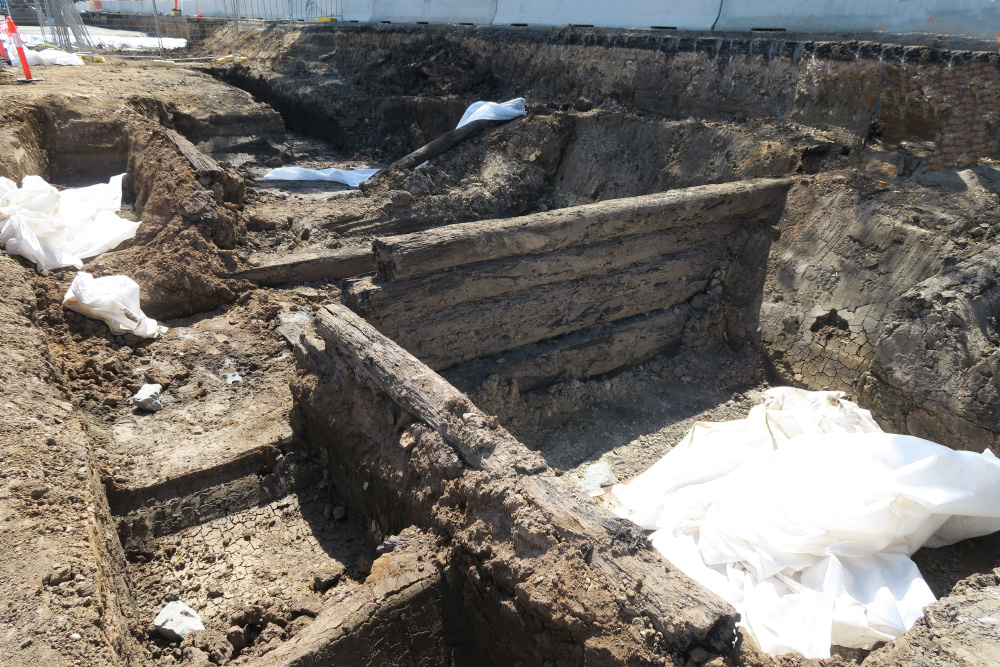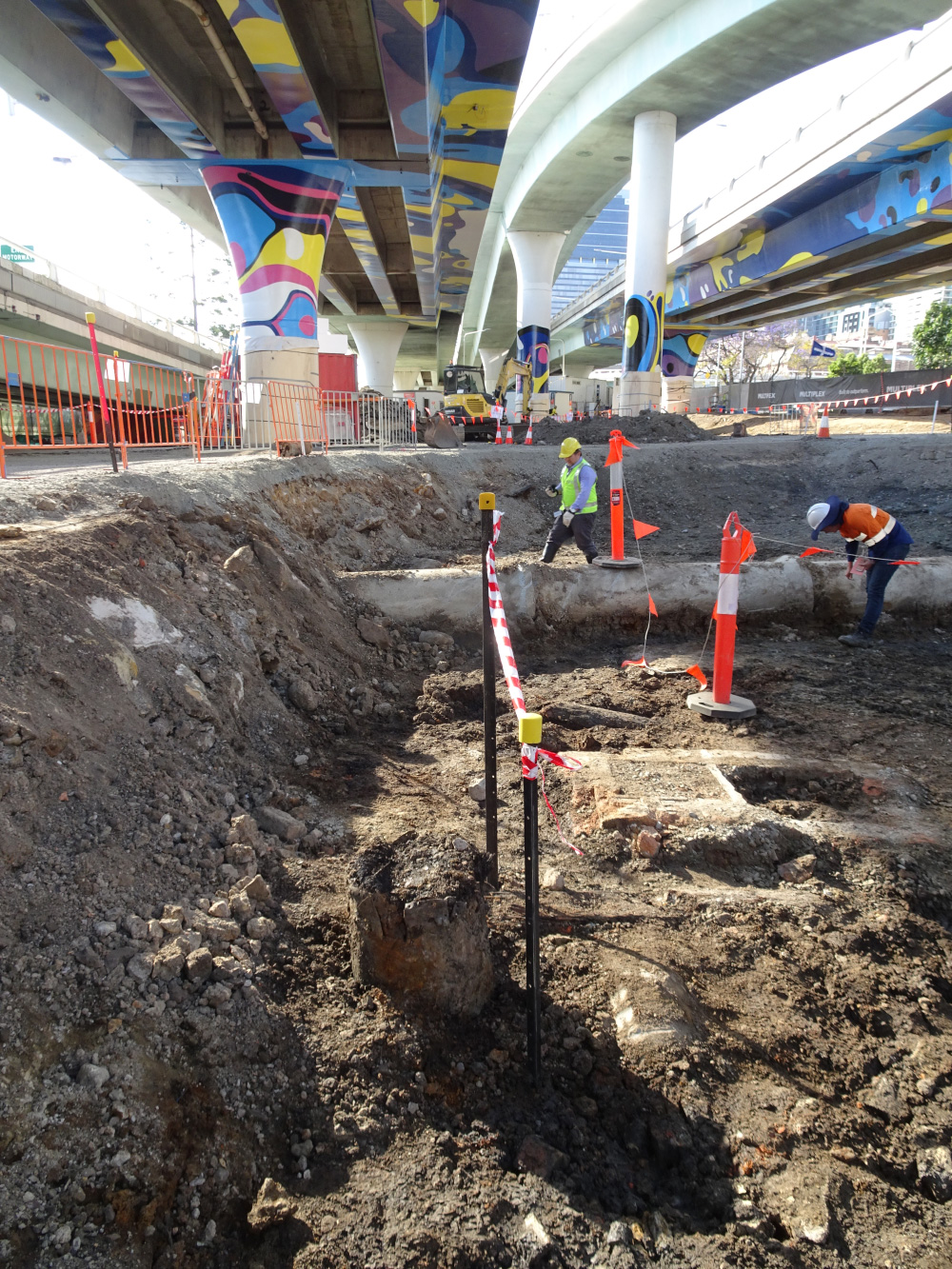Archaeological Discoveries – Unearthing our history and heritage
What
Archaeological discoveries give us an insight into our past and continue to (literally) dig up Queensland’s rich heritage. The Department of Environment and Science employs qualified archaeologists that receive an increasing number of reports about archaeological discoveries.
It is worth knowing that the Queensland Heritage Act 1992 requires any potentially important discoveries of archaeological artefacts to be reported to the department so its team of experts can assess how significant the artefacts are to Queensland’s history. Penalties can apply for failing to do so.
Image gallery
When and where
Recent archaeological discoveries that are considered important to our history and heritage include:
- A large cache of century-old coins unearthed in August 2017 during construction work on the Toowoomba Bypass
- The remains of a mid-1800s timber bridge or culvert discovered in January 2018 during earthworks for the Kingsford Smith Drive upgrade project in Brisbane, and
- Timber wharf pylons, dating from the mid-1800s, and unhidden in September 2018 by earthworks for the Queens Wharf development on the city reach of the Brisbane River.
Facts and figures
Coins at the Toowoomba Bypass
- The coins found during the construction of the Toowoomba Bypass (also known as the Toowoomba Range Second Crossing) are considered one of the largest coin discoveries in Australia.
- In all 5,663 coins were found buried in a metal container, a mixture of florins, shillings and threepences ranging in dates from 1910 to 1940, and equivalent to an average annual wage in today’s currency.
- Research suggests the owner of the former farm on which the coins were found passed away in 1940, corresponding to the most recent date minted on the coins and suggesting the collection was a personal “nest egg”.
- Steps are being taken to determine the coins’ rightful owners.
Timber bridge or culvert on Kingsford Smith Drive
- Woodwork on the timber bridge or culvert remains found during work on Kingsford Smith Drive appears hand-hewn, with evidence of adze marks, suggesting a mid- to late-1800s construction.
- The discovery is significant as it tells us about early bridge or culvert construction.
- Archaeologists employed by the company managing the project recorded the remains in detail, prior to covering them with clay and a geotextile fabric and conserving them in-situ.
Mid-1800s pylons found on the Queens Wharf development
- The timber pylons unearthed during construction work relating to the Queens Wharf development on the Brisbane River still retained their copper sheathing, attached to the timber by copper fastenings.
- The pylons were discovered on the river side of William Street, beneath the Riverside Expressway.
- Copper sheathing was used to protect timber from marine worms and aquatic growth, which suggests the pylons were originally in the river itself (and also suggests that the river’s path may have itself moved over time).
- Due to its location and construction methods, experts believe the pylons were part of the Short Street Wharf, which was built in the mid-1800s.
- Consistent with archaeological best-practice, the pylons were recorded in detail, covered with a protective clay covering, and preserved in-situ.
Reflections and learnings
"Our cultural heritage is more than conserving historic buildings and places. Vital though this is, it’s also about recognising the importance of our past, and preserving important archaeological artefacts as they are discovered.
In each of the development projects that led to these archaeological finds, the companies managing the projects had specific archaeological management plans in place to deal with such finds should they occur.
This ensured that each of these finds was appropriately examined and detailed, and then preserved as part of the overall project, in the case of the bridge or culvert and wharf remains, and held for return to a rightful owner in the case of the historic coins."
—Fiona Gardiner PSM, Director Heritage, Department of Environment and Science
Find out more
Read more information on Queensland’s archaeological heritage.
Important information on what you need to do if you discover what you believe is a significant archaeological artefact is available at Report a discovery.





